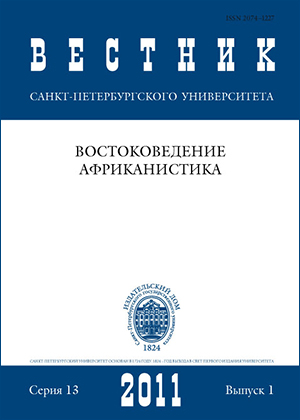Specific features of Korean vernacular poetru of the XVIII–XIX cc. (a gasa-poem “A Plum-blossom”)
Abstract
In the Korean literature history the 18–19 cc. period is marked by forming the numerous poetical anthologies containing pieces of vernacular poetry, as well as by the appearing of the new forms within the traditional genres. This paper deals with the specific features of the text perception process by the reading audience on the example of the gasa-poem “Maehwa-ga” (“A Plum blossom song”) included in the poetical anthology “Namhun taepyeong-ga” (a rare edition of the anthology in the keeping of the Manuscript collection of the Institute of Oriental Manuscripts, Russian Academy of Sciences). The textological analysis presented in the paper reveals the diverse character of the text and its relation to the archaic ritual models. We have revealed the implied topic of fertility in the traditional images system. This topic serves as a basis for text coherent and cohesion. The peculiar feature of the topic and the way it is expressed in the text narrative resulted in the specific nature of the text perception by readers representing different strata of the society. The tendencies that are characteristic for the new type of poetry follow the general tendencies in the Korean literature development at the period.
Keywords:
Korean vernacular poetry, gasa genre, “Namhun taepyeong-ga” anthology, new literature forms of the 18–19 cc., “Maehwa-ga” (“A Plum blossom song”)
Downloads
References
Downloads
Published
How to Cite
Issue
Section
License
Articles of "Vestnik of Saint Petersburg University. Asian and African Studies" are open access distributed under the terms of the License Agreement with Saint Petersburg State University, which permits to the authors unrestricted distribution and self-archiving free of charge.





